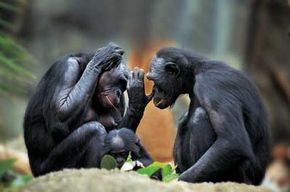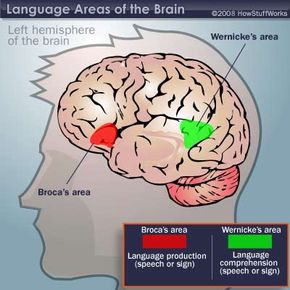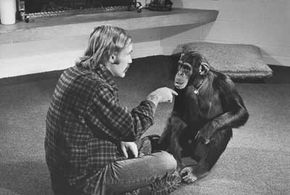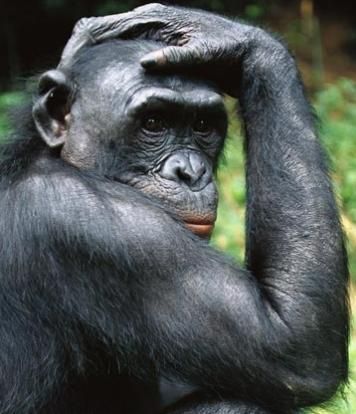Parlez vous Français? Habla Español? Sprechen sie Deutsch?
Have you ever tried to pick up a foreign language? If so, do you recall the mental gymnastics of grasping an alien grammatical structure that twisted your brain into a syntactical pretzel?
Advertisement
Now, let's say you only speak English and are stuck in a situation with someone who only understands mandarin Chinese. Words won't get your messages across, so what do you do? Dredge up your best miming skills and use gestures? With that, you may be able to communicate your immediate needs and emotions, but little else.
Monkey Image Gallery
That brings up the difference between language and communication. Human language is a far more complex expression than physical communication. Aside from having millions of words at your disposal, you also have tone and pitch for added effect. Think about the differences in how someone would interpret you silently rubbing your stomach to signal hunger compared to you exclaiming, "I'm famished!" Because of these intricacies, people, including renowned linguist Noam Chomsky, have declared that language is a uniquely human trait that separates us from the rest of the animal world. Sure, birds, bees, wolves, dolphins and others can communicate, but can they actually acquire a language?
Enter chimpanzees, humans' closest genetic relatives. More than 98 percent of our DNA matches up to that of apes, which makes them genetically closer to us than gorillas [source: Wade]. Chimpanzees make and use simple tools and can pass along cultural practices to subsequent generations [source: Jane Goodall Institute]. For decades, psychologists, linguists and primatologists have explored the question as to whether apes can cross that final bridge of learning a human language. What they have found has set off a controversial tug-of-war over the answer.
To add another wrinkle to the debate, experts have no definitive information on precisely how humans began speaking in the first place. So far, scientists have uncovered only one gene, FOXP2, which codes for our language capabilities [source: Cohen]. Comparing the protein produced by the FOXP2 gene in mice, chimpanzees and humans uncovered interesting results. Those of the mice and chimpanzees were far more similar than those of humans and chimpanzees [source: Cohen]. However, it will take more examination of gene expression during language processes to determine the influence of that protein difference.
So does this mean that chimps are incapable of human language acquisition? First, let's look at how our own brains handle prose, poetry and patois.
Advertisement




